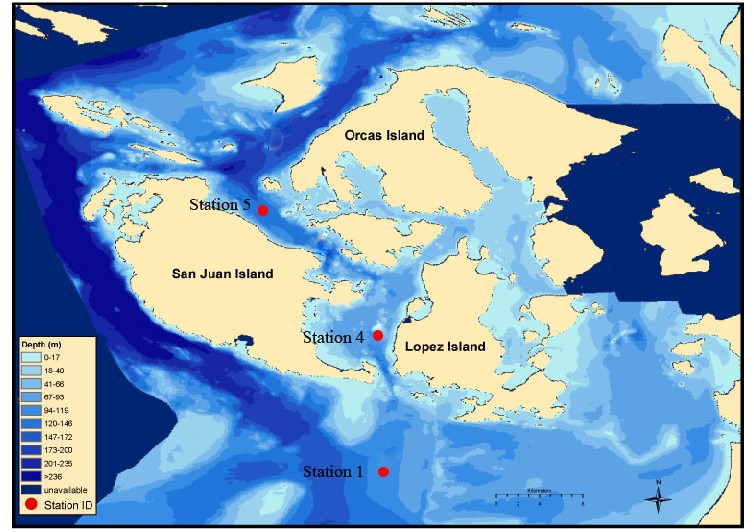A team from the University of Washington surveyed three stations in the vicinity of the San Juan Island archipelago aboard the Research Vessel Centennial on April 29, 2006. The San Juan Islands are located to the north of Puget Sound, where the Straight of Georgia meets the Straight of Juan de Fuca. The water surrounding the San Juan Islands is a mix of Pacific Ocean water brought in by the tides, and outgoing fresh water supplied by inland rivers. The Puget Sound has semidiurnal tides; or tidal action consisting of two high and two low tides per day. The denser ocean water pushes in deep below the surface during the flood tide, while the less dense fresh water layer resides near the surface during the ebbing action of the mixed tides. Two stations were sampled during incoming (flood) tides, and the third station was sampled during the outgoing (ebb) tide. The researchers sought to observe the differences in physical characteristics including temperature, salinity, density, oxygen, fluorescence/chlorophyll, transmissivity, nutrients, plankton and sediments. Due to inclement weather at Station 1, causing much of the team to suffer from sea-sickness, the original plan of four sampling stations was reduced to three.

The University of Washington Research Vessel Centennial
